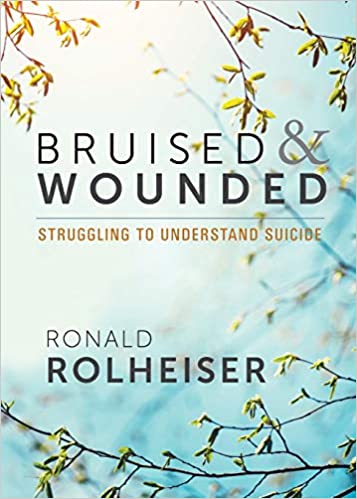Bruised and Wounded

While most of the books that I’ve been reading and reviewing over the past several weeks (and months) are focused on the clinical diagnosis of suicide and its prevention, Bruised and Wounded is focused on those who are left in the wake of suicide. The loved ones who must find ways to bravely soldier on when they know that their compass has been lost, and the only map they have no longer applies to the situation.
Maps and Compasses
Our beliefs about the world and the way that it works allows us to predict the future and thereby live in it. Humans are prediction machines (see Mindreading), and to do our marvelous task, we must take many things for granted. Gary Klein, in Sources of Power, is clear that our ability to simulate situations is quite limited, and therefore simplification is necessary. That means we must accept some truths as invariant.
The loss of a loved one, whether a sibling or a child, is a tragic reorganization of the way that things should work. No parent should have to bear the death of their child. It goes against the natural order of things. When something goes against the natural order of things, we know that it’s reorganizing the way that we see the world.
Kinds of Diseases
There are effectively three different kinds of diseases we can encounter:
- Curable – The kind of disease that we have a treatment for.
- Treatable – The kind of disease that the person will always have but we can keep at bay through treatment.
- Terminal – The kind of disease for which we can do little to prevent the person from succumbing to.
While these are the medical versions of these categories, there are similar mental health answers. Some things we’re equipped to address completely, some we can mitigate, and some we have no chance of controlling or conquering.
Those who have encountered a loved one who committed suicide are familiar with the final two types as their loved one fell into one of them. Either their condition seemed unalterable despite the best efforts, or it was under control until something broke, and it couldn’t be (or wasn’t) kept in check any longer.
Desperate Attempt
As was addressed in The Suicidal Mind, suicide is an escape from psychic pain. Bruised and Wounded takes it one step farther to describe it as a desperate attempt. It’s the “only” remaining option. (This is also in The Suicidal Mind.) There are no options left that are good to escape the pain, so this is the only option left.
The fact that it’s a desperate attempt furthers the need to protect and encourage hope in everyone. (See The Psychology of Hope for how to do this and The Hope Circuit for more on why.)
The Rhythm of Recovery
Recovery from loss has its own rhythm, as explained in The Grief Recovery Handbook and On Death and Dying. Recovering from the loss of a loved one is difficult and unpredictable. However, there is a way to recover from being Bruised and Wounded – it might just be found in the book.
